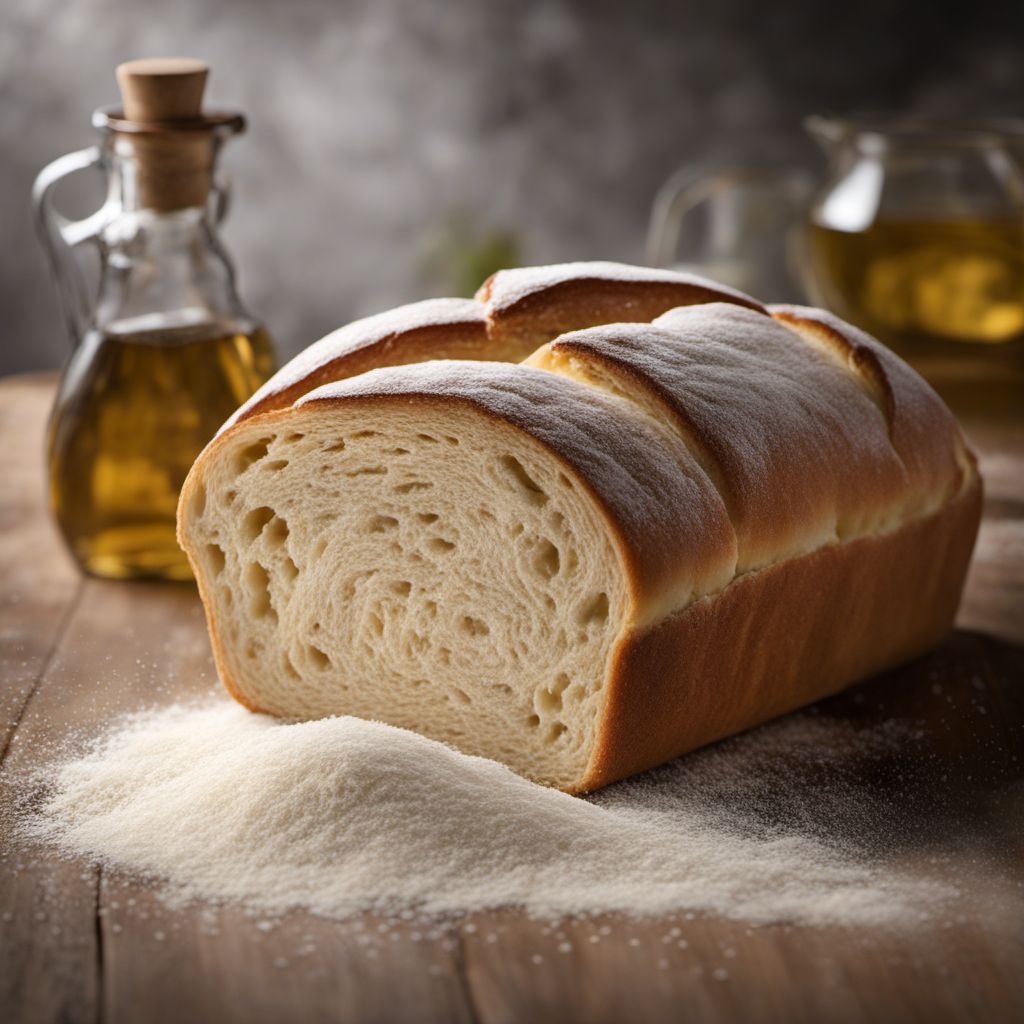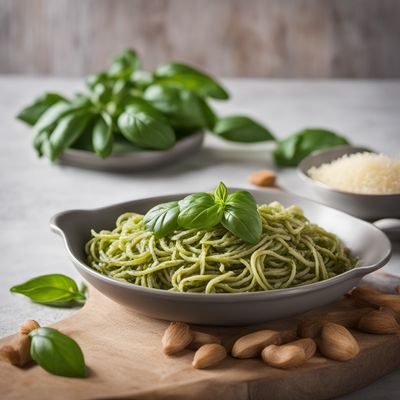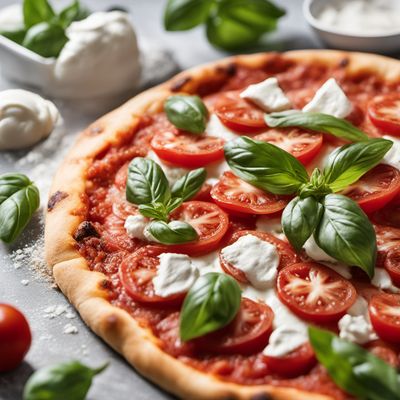
Recipe
Pagnotta del Dittaino - Traditional Italian Bread Recipe
Rustic Delight: Homemade Pagnotta Bread Recipe
4.6 out of 5
Indulge in the authentic flavors of Italian cuisine with this traditional Pagnotta del Dittaino recipe. This rustic bread, originating from Italy, is known for its crusty exterior and soft, airy interior.
Metadata
Preparation time
Preparation time: 20 minutes
Cooking time
25-30 minutes
Total time
3-4 hours
Yields
1 loaf serves 8-10 people
Preparation difficulty
Medium
Suitable for
Vegetarian, Vegan (if using vegan yeast), Dairy-free, Nut-free, Soy-free
Allergens
Wheat
Not suitable for
Gluten-free, Keto, Paleo, Low-carb, High-protein
Ingredients
-
500g (4 cups) bread flour 500g (4 cups) bread flour
-
10g (2 tsp) salt 10g (2 tsp) salt
-
7g (2 ¼ tsp) active dry yeast 7g (2 ¼ tsp) active dry yeast
-
350ml (1 ½ cups) warm water 350ml (1 ½ cups) warm water
-
Olive oil, for greasing Olive oil, for greasing
Nutrition
- Calories (kcal / KJ): 180 kcal / 753 KJ
- Fat (total, saturated): 0.5g, 0.1g
- Carbohydrates (total, sugars): 38g, 0.5g
- Protein: 6g
- Fiber: 1g
- Salt: 1.2g
Preparation
-
1.In a large mixing bowl, combine the bread flour and salt.
-
2.In a separate small bowl, dissolve the yeast in warm water and let it sit for 5 minutes until frothy.
-
3.Pour the yeast mixture into the flour mixture and mix until a shaggy dough forms.
-
4.Transfer the dough onto a lightly floured surface and knead for about 10 minutes until smooth and elastic.
-
5.Place the dough in a greased bowl, cover with a clean kitchen towel, and let it rise in a warm place for 1-2 hours or until doubled in size.
-
6.Preheat the oven to 220°C (425°F) and place a baking stone or baking sheet inside to preheat as well.
-
7.Punch down the risen dough and shape it into a round loaf.
-
8.Place the loaf onto the preheated baking stone or sheet and let it rise for another 30 minutes.
-
9.Score the top of the loaf with a sharp knife or razor blade to allow for expansion during baking.
-
10.Bake the bread for 25-30 minutes or until golden brown and sounds hollow when tapped on the bottom.
-
11.Remove from the oven and let it cool on a wire rack before slicing.
Treat your ingredients with care...
- Bread flour — Bread flour is recommended for this recipe as it has a higher protein content, which helps in developing gluten and achieving a chewy texture. If you don't have bread flour, you can use all-purpose flour, but the texture may be slightly different.
- Active dry yeast — Make sure your yeast is fresh and active. If you're unsure, you can proof the yeast by dissolving it in warm water with a pinch of sugar and waiting for it to become frothy before adding it to the dough.
Tips & Tricks
- For a crustier bread, you can create steam in the oven by placing a pan of hot water on the bottom rack while baking.
- To enhance the flavor, you can add herbs like rosemary or thyme to the dough during the kneading process.
- If you prefer a softer crust, you can brush the loaf with melted butter or olive oil immediately after removing it from the oven.
Serving advice
Pagnotta del Dittaino is best enjoyed fresh out of the oven or within a day of baking. Serve it warm with a drizzle of extra virgin olive oil, balsamic vinegar, or your favorite Italian dips. It pairs well with soups, salads, and Italian antipasti.
Presentation advice
To showcase the rustic beauty of Pagnotta del Dittaino, present it on a wooden cutting board or a rustic bread basket. You can dust the loaf with a little flour for an artisanal touch. Slice the bread at the table to reveal its soft, airy crumb.
More recipes...
For Pagnotta del dittaino
For Italian cuisine » Browse all
More Italian cuisine dishes » Browse all

Mozzarella in carrozza
Mozzarella in Carrozza
Mozzarella in carrozza is an Italian sandwich made with mozzarella cheese and a variety of toppings. It is a popular street food in Italy and is...

Pollo alla Potentina
Potenza-Style Chicken
Pollo alla Potentina is a classic Italian dish that features chicken cooked in a spicy tomato sauce.

Gnocchi di pasta lievitata con ragù di coniglio
Leavened pasta gnocchi with rabbit ragù
Gnocchi di pasta lievitata con ragù di coniglio is a classic Italian dish that features rabbit ragù served over leavened pasta gnocchi. The dish...






